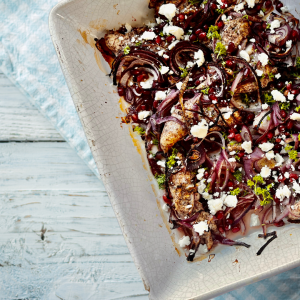Spices are the magical ingredients that can transform a simple dish into a culinary masterpiece. Among the wide array of spices available, one stands out for its unique tangy flavour and vibrant red hue: Sumac. With a rich history dating back centuries, this lesser-known spice has been an essential ingredient in various cuisines around the world.
Sumac is derived from the berries of the sumac shrub. Native to the Middle East and the Mediterranean region, this small tree-like plant produces clusters of crimson-colored berries. These berries are dried and ground into a coarse powder, which is then used as a spice. Sumac has been used for centuries, dating back to ancient times, and holds a prominent place in Middle Eastern, Turkish, and Mediterranean culinary traditions.
The unique characteristic that sets sumac apart from other spices is its tangy flavour. It adds a bright, lemony acidity to dishes. The tartness of sumac makes it an excellent substitute for lemon juice or vinegar in recipes. It’s so versatile and enhances the flavours of various dishes. It is commonly used as a seasoning in Middle Eastern and Mediterranean cuisines, where it adds a distinctive tang to salads, dips, and meat dishes.
Aside from salads, sumac can be used as a dry rub for meats like chicken, lamb, or fish, providing a tangy contrast to the richness of the meat. It also pairs well with roasted vegetables, adding a burst of flavour to dishes like roasted carrots or cauliflower. Additionally, sumac can be sprinkled over hummus, rice pilaf, or even used as a finishing touch on grilled kebabs.
As well as tasting great, sumac boasts several health benefits. The spice is rich in antioxidants, which help protect the body against oxidative stress and reduce inflammation. Sumac is also known to have antimicrobial properties and may aid in digestion. It’s also a great source of vitamins, particularly vitamin C, and minerals like potassium and calcium.











What Do You Think?
Recommend this content to other Eating Ideas readers by giving it a thumbs up!
Or why not tell us what you think by leaving a comment?